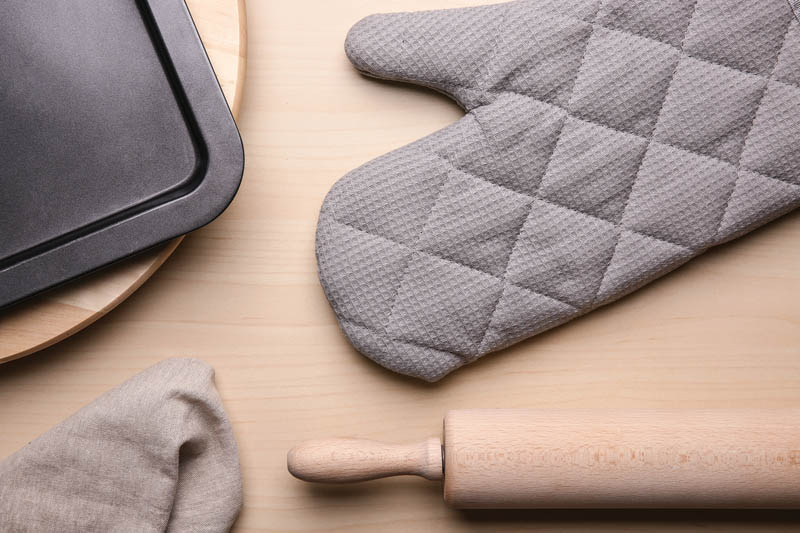I have been asked to wash towels, dishcloths and oven mitts for a local café. These items have gray stains from the restaurant’s aluminum baking pans. They soak the towels, but the cloths and mitts are badly stained.
What can I use to get this laundry white again? Chlorine bleach will remove some but not all of the stains. I have tried pre-treating with a degreaser, but I still can’t get all of the stains out. Do you have any suggestions?
If the stains are caused by the aluminum in the baking pans, your best bet is to pre-soak the dishcloths and oven mitts with hydrogen peroxide, not with chlorine bleach. Use a 1 percent to 2 percent mixture, with warm to hot water.
Let the items soak for about two or three hours. Aluminum is very difficult to remove. And chlorine simply doesn’t have the same effect on metals as hydrogen peroxide. After soaking the items, run them through a typical wash cycle. With this method, your results should be better.
I’m building a new laundromat from the ground up. The building is going to be 7,000 square feet with 70 feet of windows. Should those windows be stained glass or clear glass? I think stained glass looks much classier. What are your thoughts?
In my opinion, clear glass is the only way to go for a laundromat business. As an owner, you want good visibility from the outside through to the inside of your laundry. You want potential customers to see what type of equipment you have and what a clean, beautiful facility you run when they’re driving or walking by the store. Also, clear glass and 100 percent visibility provides your current customers with a sense of security when they’re doing their laundry inside your store. I agree with you that stained glass is a great look – however, it’s more suitable for a bar or an office building. To me, it’s just not practical for a laundromat setting.
I’m concerned about bedbugs coming into my laundromat through wash-dry-fold loads. How should I handle suspect loads of laundry?
First of all, if you think there might be a problem, keep those bundles in question segregated from the other laundry.
The best way to handle this issue is to run the garments through an initial 20-minute dryer cycle set on high heat. After the drying cycle, wash the load using detergent and chlorine bleach, if the garments are white cotton items; use non-chlorine bleach or ammonia if the load includes colored items.
Bedbugs require moderate temperatures and a moist climate to survive, so the high heat and extraction of moisture in the dryer will kill them before you even begin washing the laundry.
Another effective method for handling this problem would be to purchase some water-soluble bags. Place the affected garments in the bags, seal them and run them through a normal wash cycle. Of course, use detergent and hot water, as well as either chlorine or non-chlorine bleach or ammonia.
I recently landed a commercial account that includes a number of 12-inch, square towels. These towels are used in dairy work to clean the cows’ udders prior to attaching the milking machine. What is the best way to wash these towels?
This type of commercial laundry account is not that complicated. First of all, be sure to wash the towels in hot water. Use a neutral-base, high-surfactant detergent. If you use a bleach, use a chlorine bleach; however, make sure you also use an anti-chlor concentrate to neutralize the chlorine. You don’t want any bleach carryover, because it might aggravate the cows’ udders.







